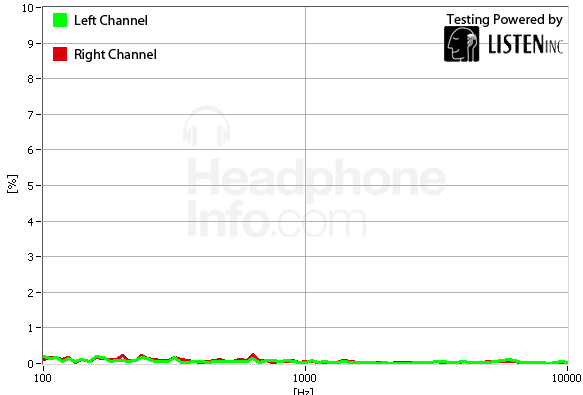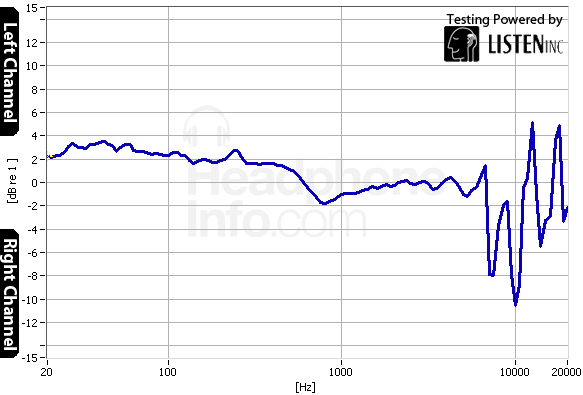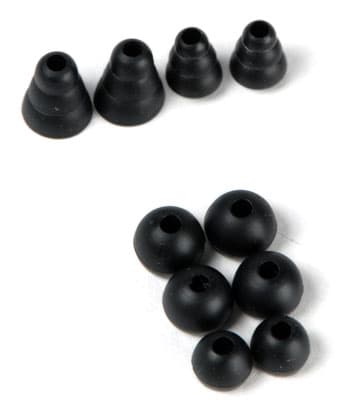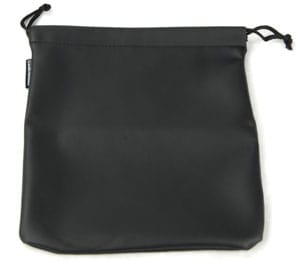Introduction
The HD 650s are currently available for about $500.
Product Overview
{{section_header}}{{section.name}}{{/section_header}}
Bid welcome to the Sennheiser HD 650s.


Speakers
{{section_header}}{{section.name}}{{/section_header}}
Sides
{{section_header}}{{section.name}}{{/section_header}}
The HD 650s are open-backed headphones, which is obvious if you look at the outside of the ear cups. You can see the headphones' innards clearly through the external grating.
Back
{{section_header}}{{section.name}}{{/section_header}}
The underside of the cups is where the cord attaches.
Band
{{section_header}}{{section.name}}{{/section_header}}
The underside of the band has padding with a divot at the top to allow the band to bend without scrunching up the pads.
Cable
{{section_header}}{{section.name}}{{/section_header}}
The headphones come with a Y-style cable that's over 9 feet long.
Here's a close-up of the plugs that affix the cable to the ear cups.
Additional Features
{{section_header}}{{section.name}}{{/section_header}}
In the Box
{{section_header}}{{section.name}}{{/section_header}}
In the box you'll find a storage case and an 1/8-inch adapter.
Durability
{{section_header}}{{section.name}}{{/section_header}}
The HD 650s seem to be a pretty durable set of headphones overall, with very specific strengths and weaknesses. On the plus side, the cord is thick (a plus on at-home headphones, but makes them less portable) and also removable. If the cord gets damaged, just swap it out for a new one.
On the negative end, the HD 650s have an open-backed design. While open backs do some nice things for sound quality, it lets dust get into the guts of the headphone very easily. Further, the grating isn't particularly sturdy, and will probably dent if it fell off your desk. Unless your desk is several hundred feet above ground, the dent will likely just be an aesthetic issue.
These negative features are very minor in relation to the overall construction of the headphones, however. While some dust can flow through the grates, there's a felt guard to protect the important bits. In general, the HD 650s are a sturdy set of headphones.
Aesthetics
{{section_header}}{{section.name}}{{/section_header}}
We like the looks of the Sennheiser HD 650s, but their unique look certainly won't be for everyone. The large oval grating on the outside of the ear cups is functional, of course, but also creates an interesting look. The headphones are over-ears, which might look a bit large on your head if you're not used to them. The greyscale paint job doesn't create much of an aesthetic draw. While this might make them a bit boring to some, it also makes them work-appropriate (if you are planning on using these at work, we have to warn you: they leak like crazy, so you'll have to keep your volume down if you don't want to be the office boom box).
Frequency Response
{{section_header}}{{section.name}}{{/section_header}}
The HD 650s had an average frequency response. As you can see, the headphones have an average response in the bass end, but gradually fall off towards the high-end. The response becomes slightly erratic as well, leading it to dip slightly below the bottom limit a few times by varying amounts.
While the HD 650s didn't have a perfect response, they still did pretty well. They never went drastically far outside our set limits and there weren't any sharp volume changes across small frequency bands.

Click here for more information on our frequency response test.
Distortion
{{section_header}}{{section.name}}{{/section_header}}
The less distortion a set of headphones has, the less we can say about it. The HD 650s didn't have a noticeable amount of distortion at any point throughout the frequency gamut we tested. Audiophiles should be quite happy with these headphones.

Click here for more information on our frequency response test.
Tracking
{{section_header}}{{section.name}}{{/section_header}}
The HD 650s had good tracking overall. This means there wasn't any frequency at which the left ear cup was playing noticeably louder than the right, and vice versa.

Click here for more information on our frequency response test.
Isolation
{{section_header}}{{section.name}}{{/section_header}}
We have found, through scientifically rigorous testing, that open-backed headphones don't isolate well. This may be shocking news to some, but we assure you it's correct.
Since the HD 650s don't have any physical barrier blocking out external noise, and they don't have any active cancellation wizardry going on, they have very poor isolation.

Click here for more information on our isolation test.
Leakage
{{section_header}}{{section.name}}{{/section_header}}
Again, since these are open-backed headphones, there isn't much of a barrier between your soundstage and the world around you. The HD 650s leak like crazy, thus fulfilling the purpose of their design.
Click here for more information on our leakage test.
Maximum Usable Volume
{{section_header}}{{section.name}}{{/section_header}}
The HD 650s were capable of outputting 105.33dB without accruing significant distortion. Given that these headphones have open backs, this is actually pretty impressive and should allow you to annoy everyone in the vicinity with your music.
We award maximum points for 120dB, which is the loudest you'd want your playback unless you're determined to deafen yourself. Since the HD 650s are open-backed headphones meant to be used in a private listening environment, 105dB should be plenty loud.
Click here for more on our maximum usable volume test
Short-Term Use
{{section_header}}{{section.name}}{{/section_header}}
The Sennheiser HD 650s might not have the softest velour or sheepskin padding, but the headphones themselves are pretty comfortable to wear. The headphones are very light and don't put a lot of pressure on the head, either on the top or on the sides. After an hour we had no real complaints.

Extended Use
{{section_header}}{{section.name}}{{/section_header}}
We really didn't have any complaints after a marathon listening session of 6 hours. They didn't really become less comfortable over time, although the padding grew to be slightly itchy at times. Overall, the HD 650s provided a comfortable wear experience.
Of course, this score and the one above are entirely subjective. Try on the headphones yourselves for at least a few hours before you make a final decision about keeping them. As anyone who's worn an uncomfortable set of headphones can assure you, this is very, very important.
Customizability
{{section_header}}{{section.name}}{{/section_header}}
There really isn't a lot of customization available for the HD 650s. You can tilt and swivel the ear cups slightly and the band can extend. There aren't any additional add-ons or optional accessories included in the box.

Cable Connectivity
{{section_header}}{{section.name}}{{/section_header}}
The HD 650s cable is 9 feet, 9 inches, which is a great length for a set of at-home headphones. This is long enough to stretch to an audio set-up that's across the room from your favorite easy chair.

The HD 650s have a 1/4-inch plug but come with an 1/8-inch adapter.
Portability
{{section_header}}{{section.name}}{{/section_header}}
These aren't portable headphones in any sense. First of all, they're large; if they're not no your head, you'll need a separate bag or container to carry them since there's no way they'd fit in your pocket. Also, the thick, long cord is simply unwieldy, taking up a significant amount of pocket space.
The headphones do come with a case, but it doesn't help you port them around much. There's no latch to it, so it's really better used as a storage device.

The pouch doesn't have any inner pockets or cord-managing features, so it's not particularly helpful.
Maintenance
{{section_header}}{{section.name}}{{/section_header}}
There's not an awful lot you can do for headphone maintenance. You can take off the padding, but that doesn't really get you to anything worth repairing. You can't remove the grating, so if the back of the headphones get dusty you'll have to rely on compressed air. The one positive maintenance feature is the removable cord. If the cord should succumb to wear and tear in some way, you can cheaply replace it with a new one.
Other Features
{{section_header}}{{section.name}}{{/section_header}}
Battery
The HD 650s don't require batteries, so they get some points here. This is because batteries are annoying. They require you to maintain an additional power source, either by recharging or replacing the batteries. If your iPod still has juice, you should be able to listen to music with them.
Design
{{section_header}}{{section.name}}{{/section_header}}
The HD 650s have better aesthetics and durability. The HD 555s are very plasticky and don't inspire a lot of confidence in their ruggedness. The HD 650s have a much more solid construction.
Frequency Response
{{section_header}}{{section.name}}{{/section_header}}
HEY, READ THIS: We have to start this section with a caveat. See, the HD 555 was one of the first headphones we ever tested (oh, nostalgia), so the graph extends all the way down to 20Hz. We stopped showing that part of the graph because our testing rig isn't 100% accurate for that range. Just disregard the bit below 100Hz and you'll be fine.
The HD 650s gain a tiny advantage on frequency response. The HD 555 had a slightly more erratic high end. The differences between the two are minor.
Distortion
{{section_header}}{{section.name}}{{/section_header}}
The HD 555s' graph is a bit misleading because, like the graph above, it includes data from the 20-100Hz range. Disregarding that chunk, you can see that the HD 555s still have slightly more low-end distortion than the HD 650s, but slightly less distortion overall. Basically, neither set of headphones has much distortion.
Tracking
{{section_header}}{{section.name}}{{/section_header}}
The HD 650 gets a solid advantage here with an even tracking. The HD 555 has some issues with the high end.
Isolation
{{section_header}}{{section.name}}{{/section_header}}
Neither set of headphones is a good choice if you're looking for isolation.
Comfort
{{section_header}}{{section.name}}{{/section_header}}
Both sets of headphones have very similar fit and padding type. They're about the same in terms of comfort.
Verdict
{{section_header}}{{section.name}}{{/section_header}}
While the HD 650s are a better set of headphones, they aren't better by all that much. Most of their advantages come in the form of subjective qualities, like clarity and a larger, more open soundstage. In terms of our testing, however, they're really similar. We recommend trying them on back-to-back and seeing if the HD 650s manage to strike you as worth the extra few hundred dollars.
Design
{{section_header}}{{section.name}}{{/section_header}}
The ATH-ESW9s are a high-class set of headphones. They have wooden backs and lambskin padding. They look quite rich.
The ATH-ESW9s also feature a slightly more sturdy construction, mainly due to their closed backs.
Frequency Response
{{section_header}}{{section.name}}{{/section_header}}
The ATH-ESW9s have some issues with their high end. After 1kHz, the ATH-ESW9's response starts dropping and falls below our bottom limit, then becomes erratic.
Distortion
{{section_header}}{{section.name}}{{/section_header}}
In terms of distortion, both headphones are equally amazing.
Tracking
{{section_header}}{{section.name}}{{/section_header}}
The HD 650s have better overall tracking, remaining much flatter up until the high end and remains less erratic as it approaches the 10kHz mark.
Isolation
{{section_header}}{{section.name}}{{/section_header}}
The ATH-ESW9 can isolate much better than the HD 650, but we wouldn't say either have particularly good isolation.
Comfort
{{section_header}}{{section.name}}{{/section_header}}
The HD 650s are more comfortable overall. We thought the ATH-ESW9s were too tight and got slightly worse over time. The ATH-ESW9s had far more comfortable padding, however, so be sure to try on both sets of headphones: if you don't run into the fit issues we did, the ATH-ESW9s would easily be more comfortable.
Verdict
{{section_header}}{{section.name}}{{/section_header}}
Both the HD 650s and ATH-ESW9s have different strengths and weaknesses. The ATH-ESW9s don't have the same caliber audio quality that the HD 650s do, but they look significantly nicer. If you're not much of an audiophile and you want a good sound and better looks, the ATH-ESW9s are a good option.
Design
{{section_header}}{{section.name}}{{/section_header}}
We think the DT 990s are sharp-looking headphones. The splash of color doesn't make them a goofy set of DJ headphones that aren't appropriate, it just makes them delightful. They're also a more traditional design as opposed to the beehive-like grate on the HD 650s. The DT 990s are also slightly more durable, sacrificing a true open back for a less permeable design. They also implement metal in leiu of plastic.
One additional aspect to keep in mind is Beyerdynamic's MANUFAKTUR feature, where you can order a pair of DT 990s online and choose your own color combination.
Frequency Response
{{section_header}}{{section.name}}{{/section_header}}
The DT 990s did a better job staying within our frequency response limits, but they have a significant decibel hike around the 7kHz mark.
Distortion
{{section_header}}{{section.name}}{{/section_header}}
There's virtually no distortion on either side, although the HD 650 features slightly less.
Tracking
{{section_header}}{{section.name}}{{/section_header}}
The HD 650s have better tracking. Like most headphones, the DT 990s have a slight blip towards their high-end.
Isolation
{{section_header}}{{section.name}}{{/section_header}}
Neither set of headphones are good isolators. The DT 990s do a slightly better job, but it's nothing to brag about.
Comfort
{{section_header}}{{section.name}}{{/section_header}}
While both headphones are comfortable initially, the DT 990s got increasingly uncomfortable over time. The band pressed hard against the top of our testers' heads after a few hours, requiring them to shift the band to continue use.
Verdict
{{section_header}}{{section.name}}{{/section_header}}
The DT 990s feature a slightly better set of test results and an uncomfortable fit. This comparison is so close that it's really up to the user to decide which one is better. Be sure to wear them for a few hours to check for any fit issues. If you find the DT 990s are comfortable, they slightly superior sound and lower price point will probably be the better bet.
Design
{{section_header}}{{section.name}}{{/section_header}}
The DT 990s say, 'I am a pair of high-end headphones, but not stuck up about it.' The Grado SR60s say, 'Haha, hey guys, remember the '80s? I'm so ironically attractive it laps regular irony and puts me into double, if not triple irony.'
Aesthetics aside, the DT 990s are far, far more durable, featuring much more metal than plastic.
Frequency Response
{{section_header}}{{section.name}}{{/section_header}}
The Grado SR60s have a slightly better frequency response, although it does feature a pronounced dip towards its high end.
Distortion
{{section_header}}{{section.name}}{{/section_header}}
The Grado SR60s don't have the best distortion result, showing some low-end and high-end spikes. The HD 650s features smooth sailing along the zero line.
Tracking
{{section_header}}{{section.name}}{{/section_header}}
The HD 650s have a smoother tracking result, which was again achieved simply by not screwing up the high-end.
Isolation
{{section_header}}{{section.name}}{{/section_header}}
While the HD 650s are better isolators, neither set of headphones should be your first choice in this category.
Comfort
{{section_header}}{{section.name}}{{/section_header}}
The Grado SR60s have bad padding. Not only do they dilute the audio quality by creating a terrible seal with their user's ears, but they also get hot and scratchy. The headphones themselves, however, fit well.
We thought the HD 650s we a better wear experience overall.
Verdict
{{section_header}}{{section.name}}{{/section_header}}
The SR60s aren't a bad set of headphones for their price. If you like their looks and can get some replacement padding, then they're a good pick-up. The DT 990s, however, are stellar right out of the box, and they're certainly more un-ironically attractive.
Conclusion
{{section_header}}{{section.name}}{{/section_header}}
The Sennheiser HD 650s are a solid pair of headphones for at-home use. They're about as good as other higher-end headphones, offering solid audio performance with very little distortion. They're fairly comfortable, although their pads aren't as soft as what you'll find on other high-end headphones. They do have open backs, which gives them a really airy, open sound. It also means they're better suited for a private listening environment as opposed to the morning bus commute.
The one sticking point is their price. At their listed price of $500, they're too expensive for what they offer. Although their removable cord does go some length towards helping you protect your investment, you should really look for these headphones on sale. Savvy shoppers can find these headphones at close to half price, so it's definitely worth researching resellers.
Meet the tester
Mark Brezinski works on the Home Team, reviewing refrigerators, minifridges, dishwashers, washing machines, dryers, air conditioners, air purifiers, and fans.
Checking our work.
Our team is here for one purpose: to help you buy the best stuff and love what you own. Our writers, editors, and lab technicians obsess over the products we cover to make sure you're confident and satisfied. Have a different opinion about something we recommend? Email us and we'll compare notes.
Shoot us an email
